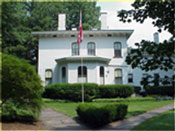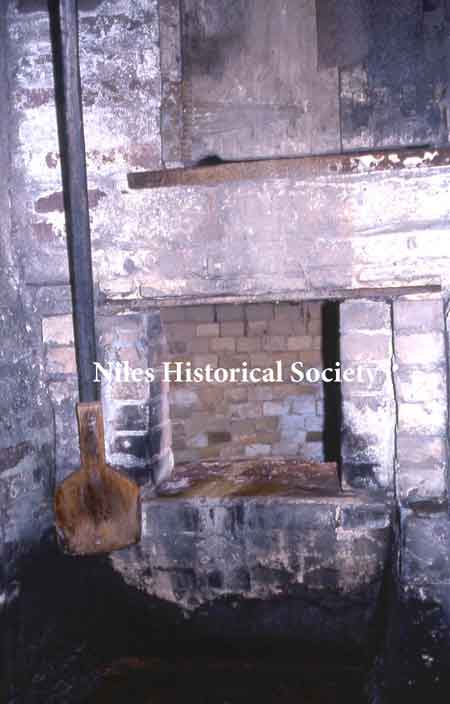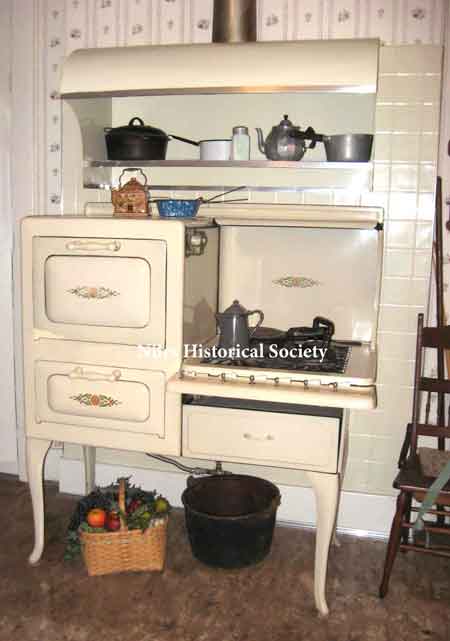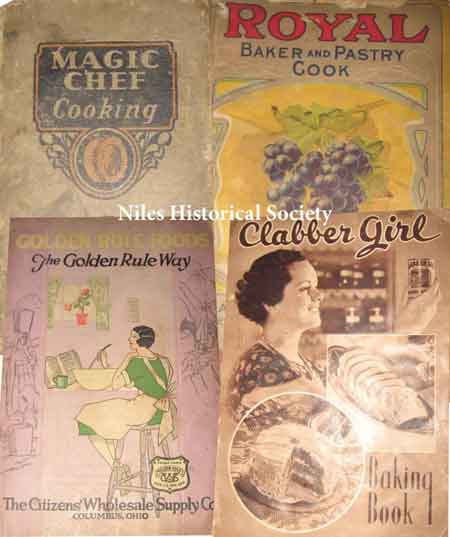Ward-Thomas Museum


Old Outdoor Pizza Ovens in Niles, Ohio
Ward — Thomas
Museum
Home of the Niles Historical Society
503 Brown Street Niles, Ohio 44446
Click here to become a Niles Historical Society Member or to renew your membership
Click on any photograph to view a larger image, click on image again to zoom into photograph.
|
PO3.24 |
Out–door Ovens Used in Niles Years Ago. A long and colorful era in the history of the East Side came to an end on Labor Day, September 6, 1976, with the demolition of the last known outdoor oven in the city. It has stood in the backyard at the home of Margaret and Kathryn Marsico for more than 100 years. Built by their father, Joseph Marsico, and George Rounds, it was one of many such ovens which dotted the east Side where most of the Italians lived. (The Marsico out-door oven was lined with fire-brick from the Niles Fire Brick Company). The Marsico family had used the oven for decades to bake all the family’s bread, pizza, Easter bread and Christmas delicacies. Like most large families, they baked once or twice a week, turning out 15 to 20 large round loaves and as many pizzas. Recognizing that the destruction of the old oven was an event replete with nostalgia, the Marsico sisters decided to mark the occasion in proper style, they had a family reunion in their home, fired up the old oven and held one last grand pizza party. These old ovens usually stood on a strong brick or concrete base. A wood fire was built inside the oven until baking temperature was reached. The hot ashes were then removed with a steel rake. Some women could tell exactly how hot the oven was by judging the color of the “halo” inside the oven, others would toss a sprinkle of flour on to the oven floor to test its heat. One use of the long handled mop was to dampen an excessively hot oven. Once the bread was baked and the loaves removed with a long-handled spatula, the oven was allowed to cool. It was then cleaned in preparation for its next use. It was filled with enough wood for the next baking, while insuring that the wood remained dry. Usually the ovens were covered by a small shed. |
|
| |
||
|
Margaret Marsico with pizza oven. |
PO1.1104 Kathryn and Margaret Marsico sat near the door of the old oven for the last time before the oven was demolished. Women customarily sewed or did needlework while waiting for the bread to bake. Kathryn is working on a hand made quilt. |
|
| |
||
Oven Heat Regulator – 1924 The first thermostatic controller to be installed in a gas range was in 1924. This automatically controls the flow of gas to the oven burner, maintaining any desired baking temperature. Before the invention of the heat regulator, a cook would open the oven door and wave their hand inside to check the temperature before placing her cake in the oven. If you were inexperienced, you could place a small amount of batter in a tiny pan, put it in the oven, and if it burnt, you knew you should turn the gas down. However, if it seemed to cook well, you would put the rest of the batter in your prepared pans and put them in the oven to bake. Cooking in those days was a guessing game. Many of the recipes would tell you the amounts as, a tea cup full, pinch of , 10cent bottle of, or “a piece of butter the size of a butternut”. You were pretty much on your own to figure out how to put the ingredients together in the proper manner, too. Telephones were not installed in every home, so you couldn’t call home and ask your mother how to cook. One old recipe book in our collection was compiled with “ingredients readily available” and in those were, milk, flour, sugar, lard, potatoes and vegetables from the garden. Nothing fancy, but it was home cooking.. Wives of the early 1900’s couldn’t go to the corner store and buy things for one meal as we often “run to the store to pick up something” today. Yes, things have changed in the kitchen today and often when visitors enter the kitchen at the Ward-Thomas Museum, they say “Oh, I remember…My grandmother had a kitchen like this” We love to stir up happy memories for people who visit the museum… |
||
| |
||
Left: Covers of various cookbooks on display in the 1920s kitchen display at The Ward-Thomas Museum. Right: Close-up of the oven temperature control dial as it appears on the stove in the kitchen display. |
||
|
|
||







